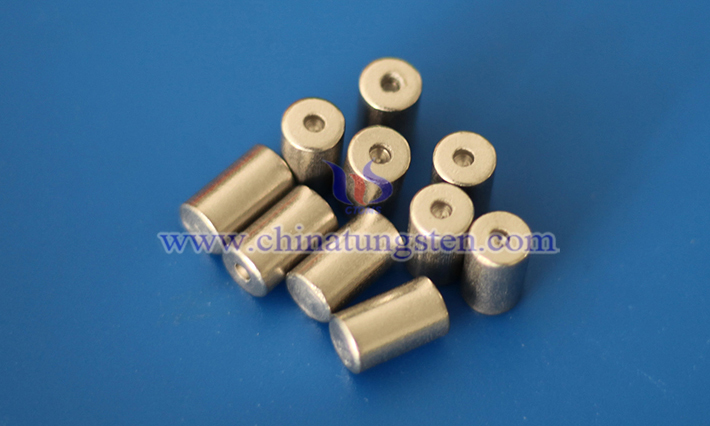Application of Barium-Tungsten Electrodes in the Laser Field
- Details
- Category: Tungsten Information
- Published on Friday, 11 April 2025 14:28
The application of barium-tungsten electrodes in the laser field is primarily attributed to their excellent electron emission performance and high-temperature stability, particularly in gas discharge lasers where they play a critical role. Below is a detailed analysis of their key applications and advantages:

I. Main Application Scenarios
1. CO₂ Lasers
Mechanism: As discharge cathodes, barium-tungsten electrodes maintain gas discharge in CO₂ lasers, exciting CO₂ molecules to generate laser output.
Advantages:
High-temperature resistance: The tungsten matrix withstands discharge temperatures (>1000°C), preventing thermal deformation.
High electron emission: Barium oxides (e.g., BaO) reduce the work function, enhancing electron emission efficiency and lowering energy consumption.
Long lifespan: Resistant to ion sputtering and chemical corrosion, making them suitable for industrial high-power lasers (e.g., cutting and welding equipment).
2. Ion Lasers (e.g., Argon/Krypton Ion Lasers)
High-current requirements: Barium-tungsten electrodes operate stably under high pressure and current density, supporting continuous-wave or pulsed output.
Thermal management: Tungsten’s high thermal conductivity enables rapid heat dissipation, preventing performance degradation due to electrode overheating.
3. Metal Vapor Lasers (e.g., Copper Vapor Lasers)
Corrosion resistance: Withstand chemical erosion from metal vapors (e.g., Cu, Au), extending electrode lifespan.
Pulse stability: Maintain stable discharge characteristics under repetitive pulse modes.

II. Performance Advantages
Enhanced electron emission: Barium doping (e.g., BaO-W or BaCaAl-O-W) significantly reduces the cathode work function (as low as 1.5–2.0 eV), increasing current density.
Structural stability: Tungsten’s rigid framework resists thermal stress, avoiding electrode deformation or cracking.
Sputtering resistance: Forms a dense surface layer under high-energy ion bombardment, minimizing material loss.
III. Technical Challenges and Improvements
Barium volatilization: High temperatures may cause gradual barium loss. Solutions include optimizing doping structures (e.g., nanocomposite coatings) to lock active materials.
Cost and processing: Complex powder metallurgy processes lead to high costs, though scale production can partially mitigate this.
Alternative materials: Research on substitutes like lanthanum hexaboride (LaB₆) or scandate cathodes continues, but barium-tungsten remains cost-effective in specific scenarios.
IV. Future Trends
Composite coating technology: Surface modifications (e.g., tungsten carbide coatings) to further improve corrosion resistance.
3D-printed electrodes: Leveraging additive manufacturing to optimize electrode microstructure and enhance electron emission uniformity.
- Chinatungsten Online: www.tungsten.com.cn
- CTIA GROUP LTD: en.ctia.group
- Tungsten News & Price: www.ctia.com.cn
- Molybdenum News & Price: news.molybdenum.com.cn
- Tel.: 86 592 5129696; Email: sales@chinatungsten.com



 sales@chinatungsten.com
sales@chinatungsten.com